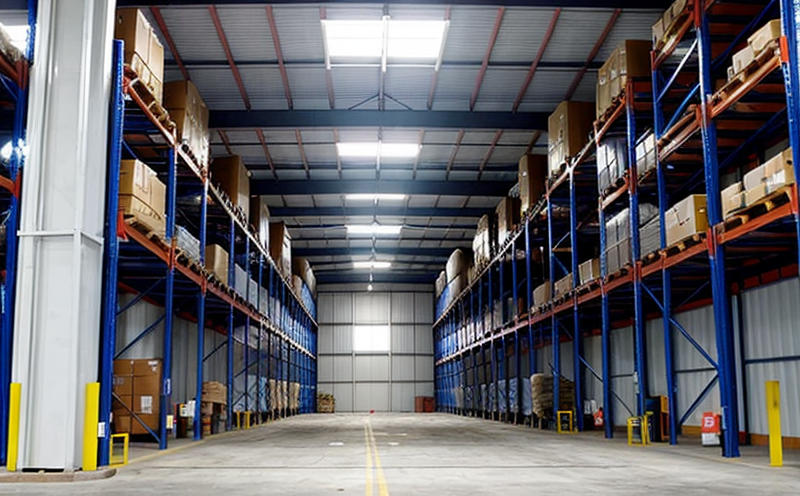Fire safety system in warehouse inspection
In today’s fast-paced industrial environment, warehouses and storage facilities are critical hubs of activity. These establishments house valuable materials, machinery, and personnel, making fire safety a paramount concern. A comprehensive inspection of the fire safety systems within these structures ensures that they meet the highest standards of protection and compliance with relevant regulations.
The primary goal of inspecting fire safety systems in warehouses is to identify potential vulnerabilities and ensure that all components are functioning as intended. This includes fire alarms, sprinkler systems, smoke detectors, emergency lighting, and fire extinguishers. An effective inspection not only safeguards the property but also protects lives by ensuring that firefighters can access critical areas quickly.
Fire safety inspections in warehouses typically involve a series of detailed checks aimed at identifying any signs of wear or damage that could compromise system integrity. These inspections are conducted by qualified professionals who adhere to established protocols and standards, such as ISO 17025 and EN 3964-1 for fire protection systems.
The process begins with a thorough examination of the building’s layout and design, focusing on areas where fire could potentially spread rapidly. This includes checking the installation of automatic sprinkler systems to ensure they are correctly positioned and capable of delivering an adequate water flow in case of a fire outbreak. Smoke detectors must be tested for their ability to detect smoke accurately and trigger alerts promptly.
Emergency lighting plays a crucial role during power outages or emergencies, ensuring that personnel can evacuate safely. Inspectors verify the brightness levels, battery condition, and operational status of these lights. Fire extinguishers are also inspected to confirm they contain suitable agents for different types of fires (Class A, B, C, D) and are properly labeled according to international standards.
During an inspection, it is common practice to simulate real-life scenarios using dummy smoke or water-based tests to evaluate the performance of fire alarms and sprinkler systems. These simulations help identify any potential issues that could hinder effective operation during a genuine emergency. By addressing these concerns proactively, warehouses can significantly reduce their risk profile.
| Scenario | Description |
|---|---|
| Smoke Detection Simulation | A controlled experiment where a small amount of smoke is released near a detector to observe its responsiveness and accuracy. |
| Sprinkler Activation Test | An on-site test involving activating sprinklers through the fire alarm system to assess their water flow rate and coverage area. |
| Evacuation Drill | A coordinated exercise where all employees are instructed to evacuate using emergency lighting, ensuring they reach safety exits without panic. |
Applied Standards
The inspection of fire safety systems in warehouses is governed by a variety of international and national standards designed to ensure consistent quality and effectiveness. These include ISO 17025 for laboratory accreditation, EN 3964-1:2015 regarding fire protection systems, NFPA (National Fire Protection Association) codes for the United States, and BS 5306 series in the UK.
Each standard provides specific guidelines on how inspections should be carried out, what criteria must be met, and which testing methods are acceptable. Compliance with these standards is crucial not only from a legal perspective but also to maintain public trust and ensure robust fire safety measures are in place.
- ISO 17025: This international standard ensures that laboratories provide accurate, reliable test results, which is essential for the integrity of fire safety inspections.
- EN 3964-1:2015: This European standard specifies requirements for fire protection systems and their components, covering design, installation, and maintenance practices.
- NFPA Codes: These codes provide detailed instructions on how to install and maintain various fire safety equipment in warehouses across the United States.
Customer Impact and Satisfaction
The impact of a robust inspection program extends far beyond mere compliance; it enhances overall warehouse safety, reduces insurance premiums, and improves operational efficiency. By identifying potential hazards early on, inspections help prevent costly fires that could devastate businesses entirely.
- Reduction in Risk: Regular inspections significantly lower the chances of fire-related incidents by ensuring all systems are working correctly.
- Enhanced Reputation: Warehouses that demonstrate commitment to safety earn a reputation as responsible and trustworthy partners, which is invaluable for attracting clients and investors.
Use Cases and Application Examples
The following examples illustrate how fire safety inspections contribute to improving warehouse operations:
- Educational Workshops: Conducted alongside inspections, these workshops educate employees about proper fire safety procedures.
- Emergency Preparedness Reviews: These reviews assess the readiness of staff and equipment during hypothetical emergencies to enhance response times.
| Scenario | Description |
|---|---|
| Educational Workshops | A series of training sessions where employees learn about fire hazards and the correct procedures for handling them. |
| Emergency Preparedness Reviews | An evaluation exercise that simulates a real emergency to test the effectiveness of evacuation plans and response times. |





